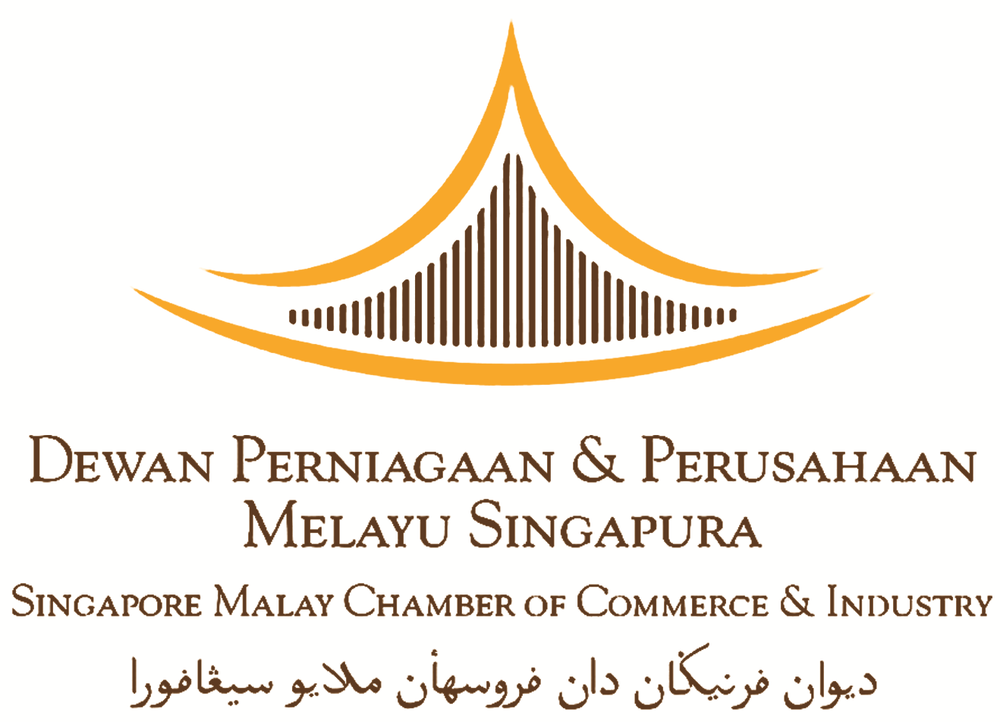- Singapore Budget 2025: What SME Owners Need to Know
- Review: MariBank | Mari Business Loan (Credit Line) – Do I Need a Business Credit Line?
- Banks in Singapore - Do They Reimburse Losses from Scams and Fraud?
- Singapore Businesses’ Guide to Hiring Interns + Grants For Interns [2024 Updated]
- Understand the Basics of Credits and How to Avoid Getting into Bad Debt
- Comprehensive Guide to Data Protection Officer - What SME Owners Need to Know [Updated]
- How to avoid being a victim of credit frauds/scams?
- Why do employers conduct background screening?
- Corporate Compliance in Singapore: Guide for SMEs and Businesses
- Should I Switch My Corporate Secretary Partner?
Singapore Budget 2025: What SME Owners Need to Know

Singapore Budget 2025: Key Takeaways for SME Owners
As Singapore celebrates its 60th year of independence(SG60), Budget 2025 introduces a robust suite of measures designed to empower SMEs to navigate economic uncertainties, adopt transformative technologies, and secure long-term growth. Here's a comprehensive breakdown of what SME owners need to know:
Introduction
The Singapore government has long recognized the pivotal role of SMEs in the nation’s economy, contributing nearly 50% of Singapore’s GDP and employing 65% of the workforce. To sustain business growth and resilience in an evolving economic landscape, the Budget 2025 introduces targeted financial assistance, talent development programs, and digital transformation incentives. These initiatives align with the broader national objectives of economic sustainability, workforce upskilling, and global competitiveness.
One key platform facilitating SME support is the Business Grants Portal, a central hub where businesses can conveniently apply for government grants. This initiative reflects the government’s commitment to reducing administrative barriers and enabling SMEs to access funding with greater ease.
The measures outlined in Budget 2025 further reinforce these efforts, ensuring that businesses can overcome financial challenges, embrace innovation, and expand into international markets.
Why Budget 2025 Matters for SMEs
SMEs contribute nearly 50% of Singapore’s GDP and employ 65% of the workforce. With rising operational costs, workforce upskilling needs, and internationalization challenges, Budget 2025 offers targeted solutions to empower SMEs.
1. Financial Relief and Tax Support
Businesses facing cash flow constraints will benefit from the following:
Corporate Income Tax (CIT) Rebate and Cash Grant
- 50% CIT rebate for Year of Assessment (YA) 2025.
- Minimum benefit of $2,000 in the form of a CIT Rebate Cash Grant.
- Maximum total benefit (CIT Rebate + Cash Grant): $40,000 per company.
- Eligibility: Companies must have at least one local employee and have made CPF contributions for them in 2024.
- Disbursement: Automatically credited from Q2 2025.
Personal Income Tax (PIT) Rebate
- 60% PIT rebate for YA 2025, capped at $200 per taxpayer.
2. Wage Support and Employee Upliftment
To help SMEs retain talent and manage wage increases, the government is enhancing wage support schemes.
Progressive Wage Credit Scheme (PWCS) Enhancements
- Government co-funding support for wage increases given in 2025 rises from 30% to 40%.
- 2026 support increases from 15% to 20%.
- Eligibility: Employers must sustain the wage increase for at least two years for employees earning up to $3,000 before the increase and up to $4,000 after the increase.
- Disbursement: Payouts for 2025 increases will be made in Q1 2026; for 2026 increases, in Q1 2027.
3. Internationalization and Market Expansion
For SMEs eyeing overseas growth, the budget provides enhanced internationalization support.
Double Tax Deduction for Internationalisation (DTDi) Scheme Extension
- Extended until 31 December 2030.
- 200% tax deduction on qualifying market expansion and business development expenses.
Market Readiness Assistance (MRA) Grant Extension
- Enhanced grant cap of $100,000 per new market extended until 31 March 2026.
- Eligibility: SMEs expanding into new overseas markets.
4. Mergers and Acquisitions (M&A) Support
Encouraging business inorganic growth through acquisitions:
Mergers and Acquisitions (M&A) Scheme Extension
- Extended until 31 December 2030.
- M&A allowance: 25% of up to $40 million of acquisition value.
- 200% tax deduction on transaction costs, capped at $100,000 per YA.
Enterprise Financing Scheme (EFS) – M&A Loan Enhancements
- From 1 April 2025, scope expands to support targeted asset acquisitions.
5. Financing and Funding Support
To help SMEs manage cash flow and access capital:
Enterprise Financing Scheme (EFS) – Trade Loan Enhancements
- Maximum loan quantum increased from $5 million to $10 million.
Land Intensification Allowance (LIA) Scheme Extension
- Extended until 31 December 2030.
6. Innovation and Technology Adoption
Enterprise Compute Initiative
- $150 million set aside to help businesses harness AI solutions.
- Provides access to cloud computing resources and expert consultancy.
7. Additional Notable Investments
$3 Billion Top-Up for National Productivity Fund (NPF)
- Supports industrial transformation and Refundable Investment Credits (RIC).
- Backs programs like SkillsFuture Work-Study and Construction Productivity and Capability Fund (CPCF).
$1 Billion Investment in Life Science & Semiconductor R&D
- Funding allocated to refresh biotech and medtech infrastructure.
- Establishment of a new national semiconductor R&D facility.
Encouraging AI Adoption with $150 Million Enterprise Compute Scheme
- Supports SME Go Digital and Productivity Solutions Grant (PSG) to help SMEs adopt digital tools and technologies.
- Helps businesses integrate AI and cloud solutions.
$200 Million Top-Up for NTU CTC Grant
- Supports workforce upskilling through NTU Company Training Committee (CTC) grant.
Key Budget 2025 Measures at a Glance
| Measure | Details | Benefit for SMEs |
| Corporate Income Tax Rebate | 50% rebate, min $2,000 benefit | Improves cash flow |
| Wage Support (PWCS) | Co-funding up to 40% | Helps retain employees |
| MRA Grant | Up to $100,000 per market | Supports global expansion |
| Enterprise Financing Scheme – Trade Loan | Loan cap raised to $10M | Eases access to capital |
| National Productivity Fund (NPF) | $3B top-up | Supports industry transformation |
| AI & Digital Adoption Grants | $150M for AI solutions | Enhances productivity |
How Business Owners Can Leverage Budget 2025
Embrace Digital Transformation
Pro Tip: Start with a digital audit to identify areas for tech improvement.
Invest in Sustainability
- Utilize GreenTech Fund and Energy Efficiency Grant to reduce costs and carbon footprint. You can read more about EEG on our blog here.
Upskill Your Workforce
- Leverage SkillsFuture Enterprise Credit for staff training.
Pro Tip: Focus on AI and data analytics skills.
Explore Global Markets
- Use MRA Grant for market research and overseas expansion. Check out our blog for more details about MRA Grant here.
Optimize Financial Management
- Apply for the SME Working Capital Loan to sustain growth.
- Work with financial advisors to maximize tax benefits.
Conclusion
Budget 2025 strikes a balance between immediate financial relief and strategic investments in innovation, workforce, and sustainability.
For SMEs, the key lies in leveraging these measures to build resilience, adopt technology wisely, and seize growth opportunities in a dynamic economy. As PM Lawrence Wong emphasized, the goal is to ensure businesses "move onward together for a better tomorrow."
For detailed eligibility criteria and application deadlines, visit the Singapore Budget 2025 portal.
Key Takeaways:
- Prioritize digital adoption to stay competitive.
- Invest in sustainability to align with global trends.
- Upskill your workforce to future-proof your business.
- Explore international markets for growth opportunities.
- Optimize financial management with available grants and tax reliefs.
With the right strategies and government's business support schemes, Singaporean SMEs can thrive in the dynamic business landscape of 2025 and beyond.
Frequently Asked Questions
1. Who qualifies for the Corporate Income Tax (CIT) rebate and cash grant?
SMEs with at least one local employee who has CPF contributions in 2024 will automatically receive the rebate and grant in Q2 2025.
2. How can SMEs benefit from the Progressive Wage Credit Scheme (PWCS)?
SMEs that provide wage increases to eligible employees earning up to $4,000 will receive co-funding support of up to 40% for 2025 wage increases and 20% for 2026.
3. What grants are available for businesses looking to expand overseas?
The Market Readiness Assistance (MRA) Grant provides up to $100,000 per new market, and the Double Tax Deduction for Internationalisation (DTDi) allows a 200% tax deduction on qualifying expenses.
4. What financing support is available for SMEs?
The Enterprise Financing Scheme (EFS) – Trade Loan now has a maximum loan cap of $10 million, helping SMEs access capital for growth.
5. How can businesses leverage AI and digital technology through Budget 2025?
The $150 million Enterprise Compute Initiative offers grants and cloud resources to help SMEs integrate AI solutions into their operations.
Read also: Singapore Businesses’ Guide to Hiring Interns + Grants For Interns [2024 Updated]
Read also: Comprehensive Guide to Understanding Moneylenders Credit Bureau (MLCB) Loan Information Report
Read also: Why should your company apply for the PW Mark?











_940.png)




